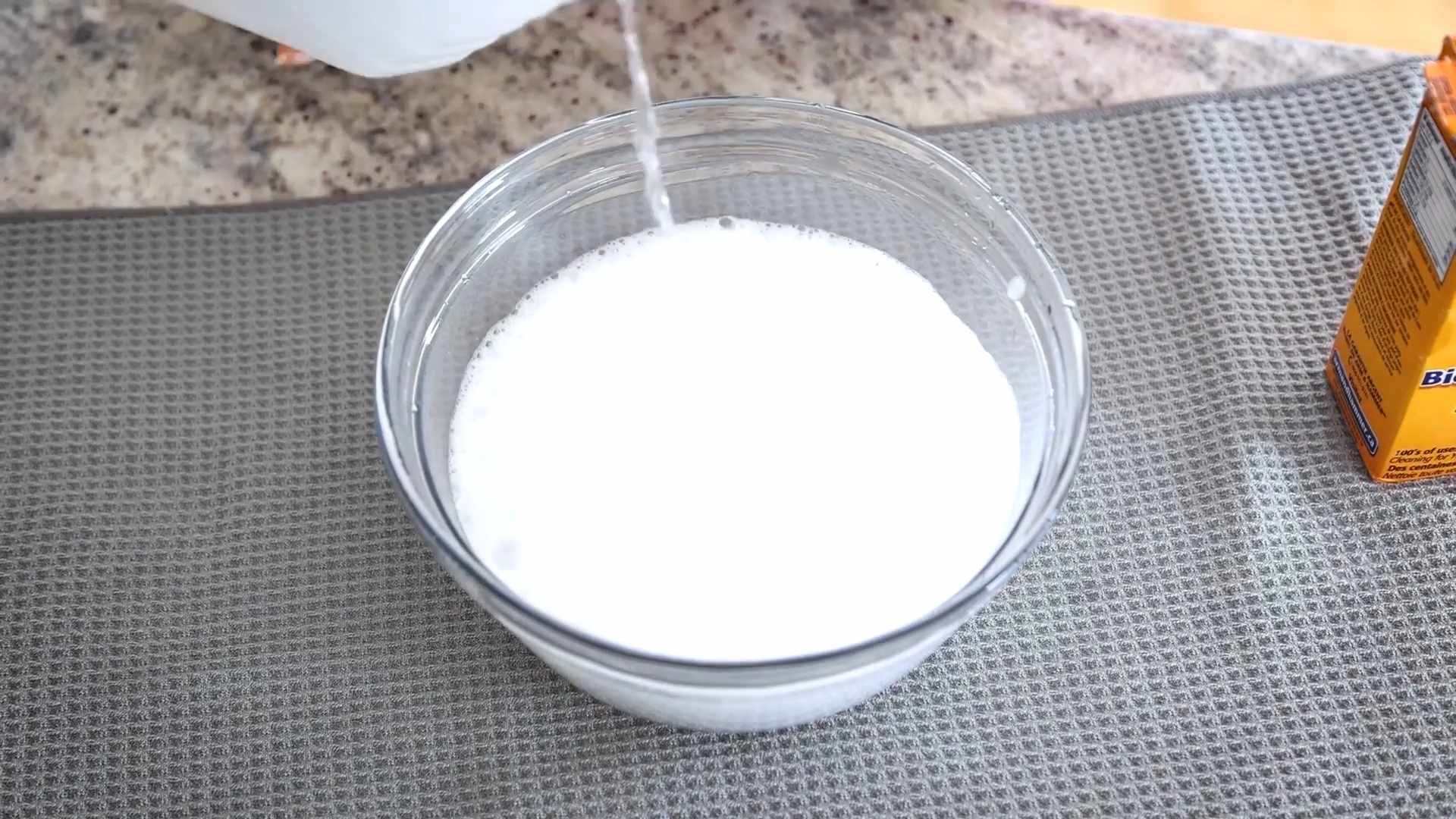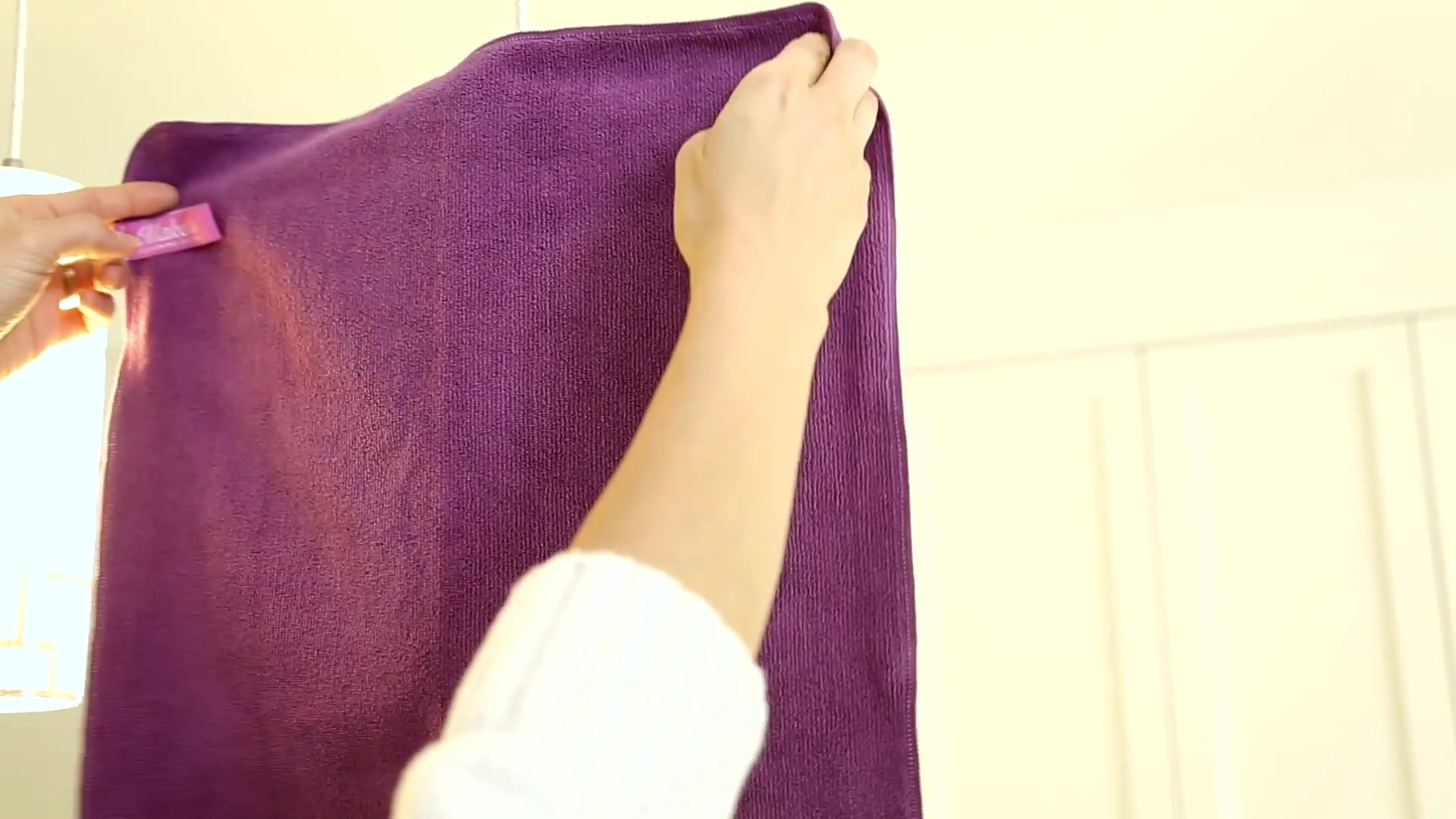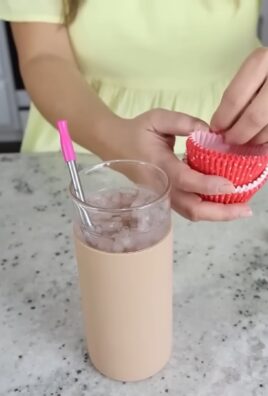Vinegar and Baking Soda Cleaning: The dynamic duo that’s about to revolutionize your cleaning routine! Forget harsh chemicals and expensive store-bought solutions. I’m here to show you how these two humble household staples can tackle almost any cleaning challenge you throw their way.
For generations, our grandmothers relied on the power of vinegar and baking soda. It’s a time-tested method, passed down through families, proving that sometimes the simplest solutions are the most effective. Think of it as a return to simpler times, a nod to resourcefulness, and a way to minimize our impact on the environment.
But why should you embrace this DIY cleaning revolution? Well, in today’s world, we’re all looking for ways to save money, reduce our exposure to harmful chemicals, and live a more sustainable lifestyle. Vinegar and Baking Soda Cleaning offers all of that and more! From scrubbing stubborn stains to deodorizing your home, these two ingredients are incredibly versatile. Plus, you probably already have them in your pantry! So, ditch the expensive cleaners and get ready to discover the amazing cleaning power of vinegar and baking soda. I promise, you won’t be disappointed!

DIY Power Cleaner: Vinegar and Baking Soda for a Sparkling Home
Okay, friends, let’s talk cleaning! I know, not everyone’s favorite topic, but trust me, this DIY cleaning solution is a game-changer. We’re ditching the harsh chemicals and embracing the power of two kitchen staples: vinegar and baking soda. This dynamic duo can tackle everything from stubborn grime to lingering odors, and it’s super affordable. So, grab your supplies, and let’s get cleaning!
What You’ll Need
Before we dive in, let’s gather our arsenal. Here’s what you’ll need to create your own all-purpose vinegar and baking soda cleaner:
* White Vinegar: The star of the show! Distilled white vinegar is a fantastic natural disinfectant and degreaser.
* Baking Soda: Our trusty abrasive cleaner and deodorizer.
* Spray Bottle: For easy application. Make sure it’s clean!
* Microfiber Cloths: These are my go-to for streak-free cleaning.
* Old Toothbrush: Perfect for scrubbing those hard-to-reach spots.
* Measuring Cups/Spoons: For accurate measurements (optional, but recommended).
* Essential Oils (Optional): If you want to add a pleasant scent, a few drops of your favorite essential oil will do the trick. Lavender, lemon, or tea tree are great choices.
* Gloves (Optional): If you have sensitive skin, gloves are always a good idea.
General Cleaning Solution: The All-Purpose Wonder
This is your everyday cleaner, perfect for countertops, sinks, and other surfaces.
Step-by-Step Instructions:
1. Prepare the Solution: In your spray bottle, combine equal parts white vinegar and water. I usually start with 1 cup of each.
2. Add Essential Oils (Optional): If you’re using essential oils, add 10-15 drops to the mixture.
3. Shake Well: Give the bottle a good shake to ensure everything is properly mixed.
4. Spray and Wipe: Spray the solution onto the surface you want to clean.
5. Let it Sit (Optional): For tougher grime, let the solution sit for a few minutes before wiping.
6. Wipe Clean: Use a microfiber cloth to wipe the surface clean.
7. Dry (Optional): If needed, use a dry microfiber cloth to dry the surface.
Deep Cleaning Power: Baking Soda Paste for Stubborn Stains
For those extra-tough stains and grime, we’re bringing in the baking soda paste. This is perfect for ovens, stovetops, and bathroom tiles.
Step-by-Step Instructions:
1. Create the Paste: In a small bowl, mix baking soda with a small amount of water until you form a thick paste. The consistency should be similar to toothpaste. Start with about 1/4 cup of baking soda and add water a teaspoon at a time until you reach the desired consistency.
2. Apply the Paste: Apply the baking soda paste to the stained or grimy area.
3. Let it Sit: Let the paste sit for at least 15-20 minutes. For really stubborn stains, you can let it sit for a few hours or even overnight.
4. Scrub: Use an old toothbrush or a scrubbing sponge to scrub the area.
5. Rinse: Rinse the area thoroughly with water.
6. Wipe Clean: Use a clean cloth to wipe the area dry.
Tackling Specific Cleaning Challenges
Now, let’s get into some specific cleaning scenarios and how to use our vinegar and baking soda solutions to conquer them.
Cleaning the Oven
Ovens can get incredibly grimy, but fear not! This method will have your oven sparkling in no time.
1. Remove Oven Racks: Take out the oven racks and soak them in hot, soapy water.
2. Make a Baking Soda Paste: Follow the instructions above to create a baking soda paste.
3. Coat the Oven: Coat the entire inside of the oven with the baking soda paste, avoiding the heating elements.
4. Let it Sit Overnight: This is crucial! Let the paste sit overnight to really loosen the grime.
5. Scrub: The next day, use a damp sponge or cloth to scrub the oven. You might need to use a bit of elbow grease!
6. Rinse: Rinse the oven thoroughly with water, removing all traces of baking soda.
7. Replace Racks: Once the oven is dry, replace the oven racks.
8. Vinegar Spray (Optional): For any remaining residue, spray the oven with a vinegar and water solution and wipe clean.
Cleaning the Microwave
Microwaves can get splattered and messy quickly. This method is quick and easy.
1. Vinegar and Water Solution: In a microwave-safe bowl, combine 1 cup of water and 1/2 cup of white vinegar.
2. Microwave: Microwave the solution for 5-7 minutes, or until the mixture boils and the microwave is filled with steam.
3. Let it Sit: Let the microwave sit for another 5-10 minutes without opening the door. This allows the steam to loosen the grime.
4. Wipe Clean: Carefully remove the bowl (it will be hot!) and wipe the inside of the microwave clean with a damp cloth.
Unclogging Drains
A clogged drain is a common household problem, but vinegar and baking soda can often do the trick.
1. Pour Baking Soda: Pour about 1/2 cup of baking soda down the drain.
2. Pour Vinegar: Follow with 1 cup of white vinegar.
3. Let it Fizz: Let the mixture fizz for 30 minutes.
4. Flush with Hot Water: Flush the drain with hot water for several minutes.
5. Repeat (If Necessary): If the drain is still clogged, repeat the process.
Cleaning Grout
Grout can be a breeding ground for mold and mildew. This method will help you get your grout sparkling clean.
1. Make a Baking Soda Paste: Follow the instructions above to create a baking soda paste.
2. Apply to Grout: Apply the paste to the grout lines.
3. Spray with Vinegar: Spray the grout lines with white vinegar. The vinegar will react with the baking soda, creating a fizzing action.
4. Scrub: Use an old toothbrush or a grout brush to scrub the grout lines.
5. Rinse: Rinse the grout lines thoroughly with water.
Removing Hard Water Stains
Hard water stains can be unsightly, but vinegar is a great solution.
1. Vinegar Soak: For showerheads or faucets, soak them in a bowl of white vinegar for a few hours or overnight.
2. Vinegar Spray: For larger surfaces like shower doors, spray them with white vinegar and let it sit for 15-20 minutes.
3. Scrub: Scrub the area with a sponge or cloth.
4. Rinse: Rinse the area thoroughly with water.
Deodorizing Your Garbage Disposal
A smelly garbage disposal is never pleasant. Here’s how to freshen it up.
1. Baking Soda and Vinegar: Pour 1/2 cup of baking soda down the garbage disposal, followed by 1 cup of white vinegar.
2. Let it Fizz: Let the mixture fizz for a few minutes.
3. Flush with Hot Water: Flush the garbage disposal with hot water for several minutes.
4. Lemon or Lime Peels (Optional): For an extra boost of freshness, grind a few lemon or lime peels in the garbage disposal.
Important Considerations
While vinegar and baking soda are generally safe, there are a few things to keep in mind:
* Don’t Mix with Bleach: Never mix vinegar with bleach, as this can create toxic fumes.
* Test on a Small Area: Before using any cleaning solution on a large surface, test it on a small, inconspicuous area to make sure it doesn’t damage the material.
* Avoid Certain Surfaces: Avoid using vinegar on natural stone surfaces like marble or granite, as it can etch the stone.
* Ventilation: When cleaning with vinegar, make sure the area is well-ventilated.
So there you have it! A comprehensive guide to cleaning your home with the power of vinegar and baking soda. Happy cleaning!

Conclusion
So, there you have it! This simple yet incredibly effective vinegar and baking soda cleaning method is more than just a cleaning hack; it’s a game-changer for maintaining a sparkling home without harsh chemicals. We’ve explored how the dynamic duo of vinegar and baking soda can tackle everything from stubborn grime in your oven to clogged drains and even freshen up your laundry. The beauty of this DIY approach lies not only in its affordability and eco-friendliness but also in its versatility.
Why is this a must-try? Because it simplifies your cleaning routine, reduces your reliance on potentially harmful commercial cleaners, and saves you money. Imagine a cleaner, fresher home achieved with just two readily available ingredients. It’s a win-win!
But don’t stop there! Feel free to experiment and adapt this method to suit your specific needs. For instance, if you’re dealing with a particularly stubborn stain, try creating a paste of baking soda and water and letting it sit on the affected area for a longer period before scrubbing. You can also infuse your vinegar with citrus peels for a more pleasant scent. Simply soak orange, lemon, or grapefruit peels in a jar of vinegar for a few weeks, then strain and use the infused vinegar as usual. This adds a refreshing aroma to your cleaning routine.
Another variation involves using different types of vinegar. While white vinegar is the most common and readily available, apple cider vinegar can also be used for certain cleaning tasks, particularly those involving delicate surfaces. Just be sure to test it in an inconspicuous area first to ensure it doesn’t cause any discoloration.
For those looking to boost the cleaning power even further, consider adding a few drops of essential oils to your vinegar and baking soda mixture. Tea tree oil, lavender oil, and eucalyptus oil are all known for their antibacterial and antifungal properties, making them excellent additions to your cleaning arsenal.
We are confident that once you experience the cleaning power of vinegar and baking soda, you’ll be hooked. It’s a simple, effective, and sustainable way to keep your home clean and healthy.
Now, it’s your turn! We encourage you to try this DIY cleaning trick and see the amazing results for yourself. Don’t be afraid to experiment with different variations and find what works best for you. And most importantly, share your experiences with us! We’d love to hear your tips, tricks, and success stories in the comments below. Let’s create a community of eco-conscious cleaners who are passionate about keeping their homes sparkling without harming the environment. Let us know how this **vinegar and baking soda cleaning** method has transformed your cleaning routine! We are eager to learn from your experiences and share them with others.
Frequently Asked Questions (FAQ)
Is vinegar and baking soda safe to use on all surfaces?
While vinegar and baking soda are generally safe for most surfaces, it’s always a good idea to test them in an inconspicuous area first, especially on delicate materials like marble, granite, or waxed wood. The acidity of vinegar can etch or dull these surfaces over time. Avoid using vinegar on aluminum, as it can cause discoloration. Baking soda, while mildly abrasive, can scratch delicate surfaces if used too vigorously. When in doubt, err on the side of caution and test before applying liberally.
Can I mix vinegar and baking soda together in a closed container?
No, absolutely not! Mixing vinegar and baking soda in a closed container can create a dangerous buildup of carbon dioxide gas. This can cause the container to explode, potentially causing injury. The reaction between vinegar and baking soda is what makes them such effective cleaners, but it’s important to use them safely. Always mix them in an open container or apply them separately to the surface you’re cleaning.
What is the best ratio of vinegar to baking soda for cleaning?
The ideal ratio of vinegar to baking soda depends on the specific cleaning task. For general cleaning, a 1:1 ratio is often sufficient. For example, you can mix 1/2 cup of vinegar with 1/2 cup of baking soda. For unclogging drains, you might use a larger amount of baking soda followed by a cup of vinegar. The key is to observe the reaction and adjust the amounts as needed. Remember, the fizzing action is what helps to loosen dirt and grime.
How do I get rid of the vinegar smell after cleaning?
The vinegar smell typically dissipates quickly after cleaning. However, if you find the odor lingering, you can try a few things. Open windows and doors to ventilate the area. You can also boil a pot of water with a few cinnamon sticks or citrus peels to help neutralize the smell. Another option is to place a bowl of baking soda in the room to absorb odors. As mentioned earlier, infusing your vinegar with citrus peels before using it for cleaning can also help to create a more pleasant scent.
Can I use vinegar and baking soda to clean my oven?
Yes, vinegar and baking soda are excellent for cleaning ovens. First, remove any loose debris from the oven. Then, make a paste of baking soda and water and spread it evenly over the interior surfaces of the oven, avoiding the heating elements. Let the paste sit overnight. The next day, spray the baking soda paste with vinegar. The vinegar will react with the baking soda, causing it to fizz. Wipe away the loosened grime with a damp cloth. You may need to scrub stubborn areas with a sponge or brush.
Are there any surfaces that I should never clean with vinegar and baking soda?
Yes, as mentioned earlier, avoid using vinegar on marble, granite, aluminum, waxed wood, and certain types of stone. Baking soda should be used with caution on delicate surfaces, as it can scratch them if used too vigorously. Always test in an inconspicuous area first. Also, avoid using vinegar and baking soda on electronics or screens, as the moisture can damage them.
Can I use this method to clean my washing machine?
Yes, you can use vinegar and baking soda to clean your washing machine. To clean a top-loading washing machine, add 1 cup of baking soda to the drum, followed by 2 cups of white vinegar. Run the machine on the hottest and longest cycle. For a front-loading washing machine, add 1/4 cup of baking soda to the detergent dispenser and 1/2 cup of white vinegar to the drum. Run the machine on a hot cycle. This will help to remove buildup, freshen the machine, and eliminate odors.
How often should I use vinegar and baking soda for cleaning?
The frequency of using vinegar and baking soda for cleaning depends on your needs and preferences. For general cleaning, you can use them as often as you would use any other cleaning product. For specific tasks like unclogging drains or cleaning ovens, you may only need to do it every few months. Pay attention to the condition of your home and adjust your cleaning schedule accordingly.
Can I use colored vinegar instead of white vinegar?
While colored vinegar, such as red wine vinegar or balsamic vinegar, can be used for some cleaning tasks, it’s generally best to stick with white vinegar. Colored vinegar can stain certain surfaces, especially light-colored ones. White vinegar is also more acidic, making it a more effective cleaner.
What are the environmental benefits of using vinegar and baking soda for cleaning?
Using vinegar and baking soda for cleaning is a more environmentally friendly option than using many commercial cleaning products. Vinegar and baking soda are both natural, biodegradable substances that are not harmful to the environment. They also reduce your reliance on harsh chemicals that can pollute waterways and harm wildlife. By choosing vinegar and baking soda, you’re making a conscious effort to reduce your environmental impact.





Leave a Comment